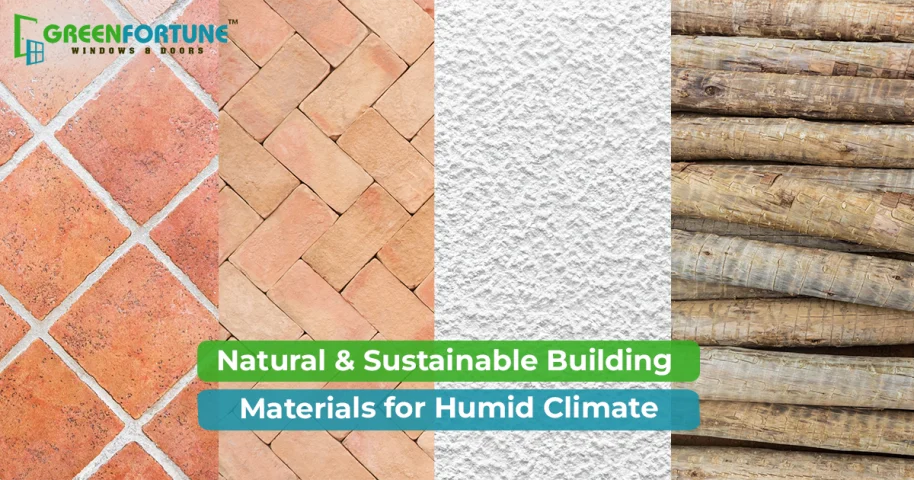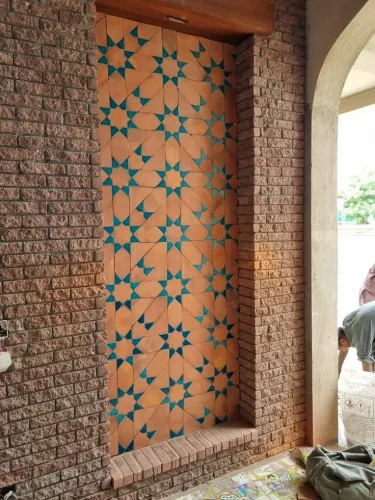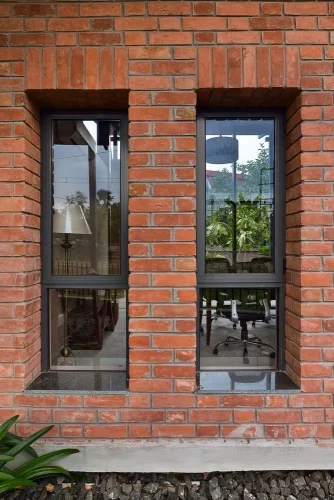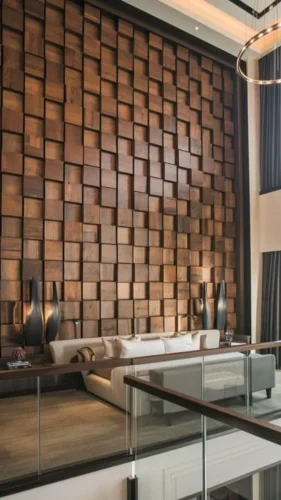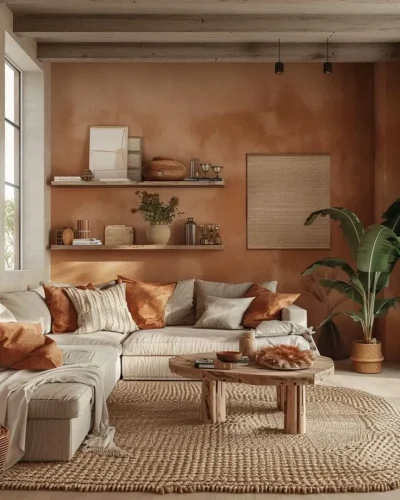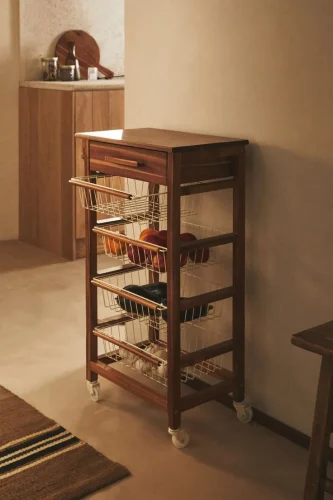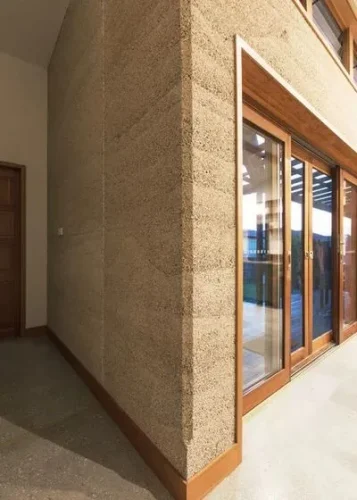
Smart Store Room Design Ideas for Indian Homes
August 19, 2025
How to Choose an Interior Designer in India
August 19, 2025If you live on a coast or in a humid location, heat, dampness, and humidity are part of daily life. Air-conditioning units can be used for temporary relief and are not a practical, economical, or environmentally conscious solution.
Selecting the best natural materials for a humid environment is also critical. The use of breathable, sustainable, and natural materials helps reduce your carbon footprint in addition to keeping your home dry and cool.
Here’s the list of the Best Natural Materials for Humid Climate:
1. Terracotta Tiles
Terracotta tiles are made from natural clay. They are great for roofs and floors because they stay cool and help reduce heat inside your home. These tiles also absorb and release moisture slowly, which keeps your space dry. A classic choice for tropical climate home design.
2. Clay Bricks
Clay bricks are widely used in Indian homes. They are breathable, durable, and naturally moisture-resistant materials. These bricks help control humidity inside the house and are perfect for hempcrete, which is a mix of hemp fibers and lime. It acts as a natural insulator and controls moisture levels in your home. It is lightweight, breathable, and completely biodegradable, making it perfect for tropical climate home design.
3. Stone Walls
Natural stones like laterite, sandstone, or granite work really well in coastal homes. Stone walls are strong and can handle both heat and rain. They don’t absorb much moisture and last for a very long time, making them one of the best materials for coastal homes.
4. Recycled Wood
Using recycled wood is a smart and sustainable option. Old timber, when treated well, is resistant to moisture and works great for doors, windows, and furniture. It adds a warm, natural look to your home and reduces the need for cutting new trees.
5. Lime Plaster
Lime plaster is a wall finishing material that keeps walls dry and mold-free. It lets moisture escape rather than trapping it inside. This helps prevent damp walls and gives a clean, breathable surface, and it's an eco-friendly humid weather.
6. Coconut Wood
Coconut wood is strong, long-lasting, and easily available in tropical and coastal regions. It is resistant to moisture and works well for flooring, furniture, and ceiling panels. Since it’s locally sourced, it’s also an eco-friendly humid weather.
7. Hempcrete
Hempcrete is a mix of hemp fibers and lime. It acts as a natural insulator and controls moisture levels in your home. It is lightweight, breathable, and completely biodegradable, making it perfect for tropical climate home design.
Why Use Natural Materials for Humid Climate?
Here’s the list of reasons why one should use natural materials for humid climates:
- Maintains Indoor Temperatures: Materials like terracotta, clay, and stone have thermal insulation properties; hence, they absorb heat during the day. It keeps your rooms cooler even when it’s hot outside and easily allows airflow, so your home feels fresh and breezy and not sweaty.
- Prevent Mold & Dampness: The presence of mold, mildew, and wet walls can be a recurring issue in humid environments. Some breathable, moisture-resistant materials, like hempcrete, clay brick, and lime plaster, help you keep your walls dry by absorbing the excess moisture. They also help to keep your house dry and healthy and prevent mold and nasty smells.
- Energy Saving: When your home is built with the right materials, it stays cooler on its own. This means you won’t need to run your air conditioner all day. Less AC use means lower electricity bills and less harm to the environment. It's a smart, energy-saving choice that pays off in the long run.
- Creates an Eco-Conscious Living Space: Natural materials for humid climate are free and safe from chemicals, which makes them great for homes. They provide healthier air in your home and are safe for everyone. They are also eco-friendly and do not harm the planet. Most of the materials offered, like hemp, bamboo, and coconut wood, are sourced locally and are sustainable, meaning not only are you stylish with your home, but it's sustainable too.
Also Read: Eco-Friendly House Building: What It Is & How to Make Your Home Greener
Conclusion
Living in a humid or coastal region doesn’t mean you have to constantly battle moisture, heat, and mold. By choosing the right natural materials for humid climate, like terracotta, clay bricks, coconut wood, and lime plaster, you can create a cool, dry, and breathable living space. Natural materials not only regulate temperature and humidity but also promote sustainability and energy efficiency. They make your home healthier, eco-friendly, and beautifully in sync with the climate.
Also Read: Green Celebrity Homes: Sustainable Style of the Rich and Famous
Green Fortune Windows & Doors
At Green Fortune, we believe that a home should be sustainable, secure, and built to last. Our uPVC windows and doors not only add style but also improve safety, reduce outside noise, and offer long-lasting durability. Whether you're building a new house or upgrading an already existing one, let us help you make it greener and better. Explore our products here.
Also Read: How to Integrate Biophilic Design: Top 5 Ideas for Your Home
Frequently Asked Questions (FAQs)
Q1. What are the best walls for humid climates?
A: Clay bricks, stone walls, and lime plaster are excellent choices. They are breathable, moisture-resistant, and help prevent dampness.
Q2: Do natural materials require high maintenance?
A: Natural building materials like terracotta tiles or lime plaster are quite durable and low-maintenance. When installed and sealed properly, they can last for years.
Q3: Can natural building materials prevent molds?
A: Yes, natural building materials like hempcrete, lime plaster, and terracotta can prevent moisture. They also keep walls dry and reduce the risk of mold and mildew.
Check out the list of natural materials for humid climate







